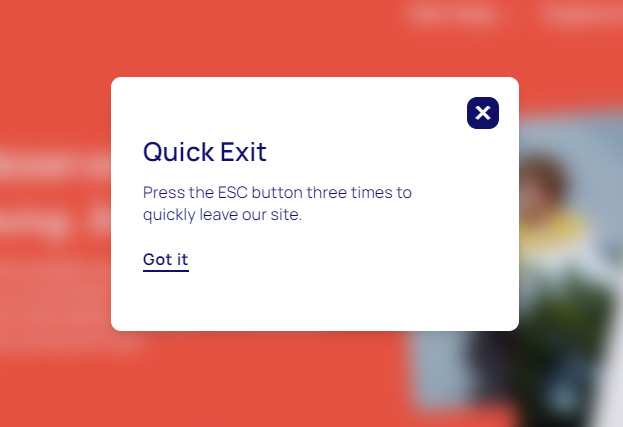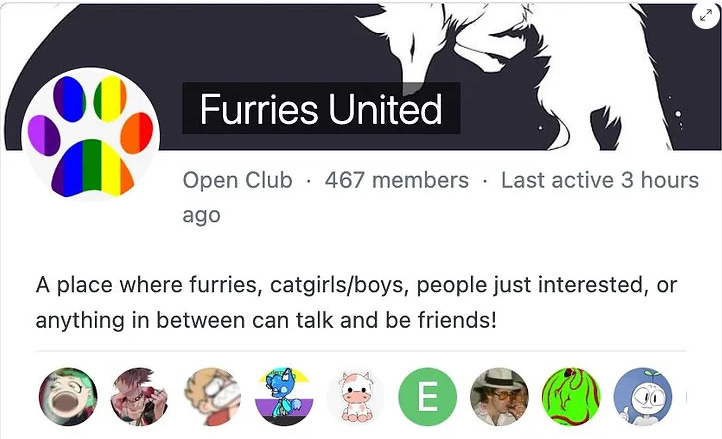by Sue Greenwald, M.D.
Celebrating their 25th Anniversary, The Trevor Project suicide hotline was started in 1998 by altruistic movie producers. The Academy Award winning short film “Trevor,” about a suicidal gay teen, was set to air on HBO. The producers wanted a crisis line number to put on the screen for teens who might see themselves in a similar situation. No doubt the hotline did a lot of good in the beginning. However, things have changed significantly since 1998, even since 2020, with mainstream acceptance of homosexual individuals. Now, nationally, according to the CDC, 25% of teens aspire to be in the LGBTQ cohort.
The Trevor Project, like many other advocacy groups, experienced mission creep when the TQ was added to the LGB. They have jumped onto the “transgender the youth” bandwagon. People in the know have labeled the current Trevor Project as a groomer and pedophile paradise. This is no longer a place where you should send troubled teens.
An alert reader contributed this list posted at a Valentine, NE school, which prompted further research. Check with your school to see if this resource is still being offered.
One glaring sign that something is not right here, is the pop-up that appears as soon as you go to The Trevor Project web site. If this is a service so valuable and wholesome that school counselors are recommending it, then why does a youth need a secret “out” button to hide it from their parents and family? If it is valuable enough to be listed as a school resource, if the purpose is to save lives, then you would want parents to know about it, wouldn’t you?
Mother Poses as Her Teen to Get Answers.
In this article, from the Post Millennial, one mother “Gloria,” noticed her daughter was spending an inordinate amount of time on the site, and was leaning toward desistance.
"It became clear to me that my child might be exploring desistance and finding resolution from gender dysphoria," she said. "I wanted to make sure that we had some social support. I contacted The Trevor Project for resources on detransition. They had none. I kept asking them and saying surely they must have something."
They finally sent her a link to Stonewall.org in the UK. It was to an article called "Dispelling myths around detransition." The advice for someone exploring detransitioning or advising someone on detransitioning is that they need to be aware that exploring detransitioning could just mean that you're transphobic.”
"I also contacted PFLAG, GLAAD, GLSEN, The LGBT Center and my local school board for resources on detransition. They had none. Not one. None of them," Gloria said.
Mom decided to do her own research.
Gloria posed as a 15 yr old girl, transitioning to male, who says “I’m gay, I like other boys.” She expressed doubts about her identity and wonders if she should detransition.
The counselor did ask questions about self-harm, safety and suicidal ideation. Beyond that he could only direct the the “teen” to resources on “how to pass” or socially transition, as well as information about puberty blockers, surgeries, and hormones. Although the counselor did not push hormones on the “15-yr-old,” he did not have any resources to provide about desistance or detransition. He sent her the link to transgenderteensurvivalguide.com. Says Gloria:
Under the "What am I?" link with the Trevor Project, each answer to questions about "what if" are met with answers that boil down to "you are really trans and don't listen to people who tell you otherwise because they are just transphobic."
The answer listed for "But what if I don't want to be trans?" reads:
"Self-acceptance is the only thing you can do. You can't un-choose being trans because being trans is who you are- it isn't always easy, but it's just the way things are. A lot of trans people wish we had been born with a different axab [assigned x at birth], but we have to just accept that we weren't and then make the most of the situation we're actually in."
Another link offers tips on "how to hide things from your family." While still another offers tips on how to run away from home.
Gloria, as her 15-yr-old persona, was referred by the Trevor Project counselor to Trevorspace to “find more answers.” There she found rampant mis-information about detransitioning. Doctors who are open to detransitioning are listed as transphobic. There were forums for every kind of kink and fetish, but no forum on detransitioning.
What is Trevorspace?
Meanwhile, this article, by Michael Costa of Gays Against Groomers, shines a light on TrevorSpace.
Trevorspace defines itself as:
"an affirming, online community for LGBTQ young people between the ages of 13-24 years old." With over 400,000 members across the globe, they go on to say that "you can explore your identity, get advice, find support, and make friends in a moderated community intentionally designed for you."
Quoting Mr. Costa:
“Browsing the website for merely a few minutes makes it abundantly clear what it actually is: an online dating service for children and people aged 13-24. No website or chat room of this nature should cater to minors, especially one that encourages them to talk to adults. Adults in their 20s regularly talk to teenagers about sexuality and gender transition on Trevorspace. Profiles specify whether the user is over or under 18, but there is no procedure to verify whether the user is answering truthfully. Someone of any age can say that they are a minor and have inappropriate conversations with kids.
It has been noted that a large percentage of children who are transitioning are autistic or same-sex attracted. They are being targeted. And the people doing the targeting are adults.”
“The predatory website features various “clubs” that kids can join, where they are able to discuss their sexual identities with hundreds of other kids and adults. One of these clubs is called “Furries”, designed for people who are attracted to anthropomorphic animals.
They also have clubs centered around BDSM and kink. An adult guiding a child and teaching them how to participate in their fetish is grooming and should never be tolerated in any circumstance.
These adults encourage social transition to these kids, leaving comments about how to dress and how to “pass” as the opposite sex. Social transition is a direct gateway to persistence of their trans identity and subsequent medicalization. They are applauded for taking puberty blockers, which are linked to osteoporosis, brain swelling, and future sexual dysfunction. They are given advice on how to get sterilizing hormones behind their parents’ back. And they are being taught that disembodiment/dissociating from their bodies is a good thing that everyone should try out.”
Follow the Money
Twenty five years in, with a mission that has been flipped on its head, from supporting troubled teens to exploiting them, the funding that started very simply with one small foundation and an HBO grant, now attracts a gaggle of leftist dark money.
Going to the Trevor Project web site itself, and with help from influencewatch.org, we can get some idea of who the heavy hitters are.
The Clara Lionel Foundation, started by singer Rihanna, supports climate justice causes including the International Planned Parenthood Foundation.
Panorama Global is a pass-through organization to funnel money to leftist causes. The main funders are the Bill and Melinda Gates Foundation (Non-profit), the Charles and Lynn Schusterman Family Foundation (Non-profit), and the Rockefeller Foundation (Non-profit). The first 2 foundations are closely tied to Planned Parenthood, and have connection with George Soros’ Open Society Foundation and the dark-money New Venture Fund. The third one, Rockefeller, is known for its interest in population control and eugenics.
Wellspring Philanthropic Foundation is another pass-through foundation tied to George Soros and the dark-money New Venture Fund.
What do all of these philanthropists have in common? They support population control in the form of abortion and transgenderism.
Privacy? What Privacy?
In May of 2022, The Trevor Project partnered with a digital watchdog called Gaggle, triggering blowback from privacy advocates. According to The Guardian: (italicized emphasis is added by this author)
“Gaggle, which uses artificial intelligence and human content moderators to sift through billions of student chat messages and homework assignments each year in search of students who may harm themselves or others, published a webpage noting the two were collaborating to “improve mental health outcomes for LGBTQ young people”.
Gaggle, founded in 1999, does not publicly report its finances. The Dallas-based company says it monitors the digital communications of over 5 million students across more than 1,500 school districts nationally.
As schools increasingly turned to student activity monitoring software during the pandemic, the Trevor Project portrayed their growth as an inevitable result of districts seeking “to avoid liability issues”.
A Trevor Project spokesperson said it aims to have a positive influence on the way Gaggle navigates privacy concerns involving LGBTQ+ youth, while a Gaggle representative said the company sees the relationship as a learning opportunity.
“It is our stance that since these tools are not going anywhere, we think it’s important to do our part to offer our expertise around LGBTQ+ experiences,” the Trevor Project spokesperson said.
Gaggle’s algorithm relies on keyword matching to compare students’ online communications against a dictionary of thousands of words the company believes could indicate potential trouble, including references to violence, sex and drugs. Among the keywords is “gay” and “lesbian”, words the company maintains are necessary to flag because LGBTQ+ youth are more likely than their straight and cisgender peers to consider suicide.”
By combing through digital materials on students’ school-issued Microsoft and Google accounts, Gaggle seeks to alert educators – and in some cases the police – of students’ online behaviors that suggest they might harm themselves or others.”
The Trevor Project defended the need to work with digital safety companies, in order to help them design their products and policies.
“It’s true that LGBTQ+ youth are among the most vulnerable to the misuse of this kind of safety monitoring – many worry that these tools could out them to teachers or parents against their will,” the statement continued. “It is because of that very real concern that we have worked in a limited capacity with digital safety companies – to play an educational role and have a seat at the table so they can consider these potential risks while they design their products and develop policies.”
The Trevor Project ultimately cut ties with Gaggle, but their philosophy in favor of digital monitoring is clear.
Summary
The Trevor Project survives by attracting celebrity and foundational money to its original mission of preventing suicide. The mission is something that everyone can get behind and their branding is still very positive. It is trusted by the school counselors who recommend it, and the youth who seek it.
However, the current major donors also are huge monetary supporters of Planned Parenthood. The same Planned Parenthood that profits from selling the cross-sex hormones to lifelong transitioned customers.
In recent practice, The Trevor Project has become a site where troubled and questioning teens are “affirmed” into the transgender culture with no alternatives offered.
It has become an impediment to families who want to help and support their children, as the Trevor fallback position is to convince teens not to listen to the “transphobic” people who love them.
It refers under-age teens to Trevorspace, a chat with unvetted adults, some of which are there to perpetuate the transgender cult, and others to share their sexual fetishes with minors.
And finally, The Trevor Project wants to be a leader in the keystroke monitoring of school children as they go about their lessons on the Microsoft platforms provided by one of the major donors, Bill Gates.
Parents and school counselors who understand their mission will not want school children connecting to The Trevor Project. No wonder the website provides an emergency escape button.
The author is a retired pediatrician and co-founder of Protect Nebraska Children Coalition.





